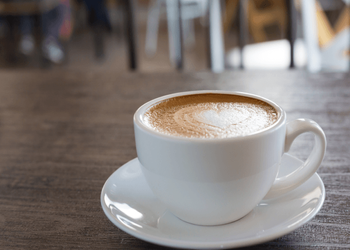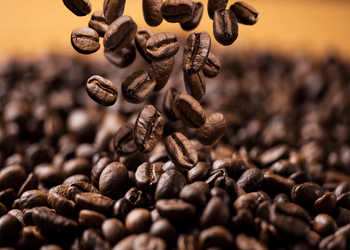
The Origin of Coffee: From Ethiopia to Nescafe

"Coffee smells like freshly ground heaven."
- Jessi Lane Adams
Latte, espresso, americano, cappuccino, roasted, filtered, arabica, robusta, decaf, phew! No matter what the name, let’s talk about coffee, a drink that many people today consider impossible to start their day without. But where, when, and who invented coffee? In the USA alone, 450 million cups of coffee are consumed per day. Wow, that’s a lot of coffee! This caffeine-ridden elixir is the second most popular beverage in the world, second only to water. While today we don’t know if the modern-day individual would be able to function without his regular cup of Joe, where did coffee originate? Let’s talk about how these aromatic beans found their way across the globe beyond centuries.

Where did coffee originate?
The most believed story about who invented coffee originates in the African country of Ethiopia. Although the tale is not verified, according to popular belief, one day a goat-herder named Kaldi found a few of his goats acting out of the ordinary. They were more active and showed bouts of excessive energy after chewing on some red berries.
Curious, Kaldi tried these berries for himself and experienced what we could call the first “caffeine rush”. Believing that these energizing effects were an important discovery, Kaldi took the berries to the monk near him. The monk thought of coffee to be intoxicating and dangerous and cast the berries into a fire.
However, the aroma that rose from the result of the coffee beans being roasted was fascinating and made everyone notice that these beans were special. The roasted beans were then ground up and added to a cup of hot water, and thus the first-ever cup of coffee came to be!

History of coffee: beyond discovery
After the story of the Ethiopian goat herder, there was a mention of coffee in Arab countries, especially in Yemen. Why there is a time-lapse in the two accounts of the origin of coffee is still unclear, but the stories of the initial roasting and coffee-making in the Middle East also have substantial evidence.
It is said that there was a man called Sheikh Omar with healing powers who for reasons unknown was banished from his community. To survive, Omar resorted to the wild red berries that at first tasted bitter but then he ground them up to produce the energizing liquid and survived for days on it. He was welcomed back into his community when they learned about this stimulation concoction.
The Arabs, Persians, and other Islamic communities around Yemen, especially the Sufis, widely adopted the use of coffee as a drink that would help them stay up at night to pray and survive the fasting during Ramadan. They had given coffee the name “kahwa” and it was believed to have many religious and medicinal purposes.
Since in the Islamic community, the use of alcohol was forbidden, coffee quickly became very popular for people to meet around and thus the first-ever “coffee houses” were established. These were inhabited mostly by men only, except once in a while if a woman was allowed to sing there.
These places which would be what modern-day cafes mean, became places where people would meet, play games, and have frivolous conversations but also soon became places for debauchery and political debate. Some people in the community felt like the ban on intoxication mentioned in Islam should also apply to coffee. This led to a ban on the trade of coffee and coffee houses in many regions, especially Mecca.

Once Yemen was conquered, the Turks became very enthusiastic about coffee and its trade. In the 15th century, the Dutch, Venetians, Turks, Maltese, Portuguese, and a lot of European countries acquired an interest in coffee, and thus through ware and trade, coffee reached many different countries. The first coffee plantation was set up by the people of the Netherlands in Sri Lanka.
It is from Java and Ceylon that the coffee export started to the Dutch East India Company and then to many other European countries. Pretty soon coffee made its way to the Caribbean, Brazil, and the Americas through the French, Portuguese, and Spanish respectively. Coffee from these countries is still regarded among the best.
In the 17th century and 18th centuries, in a lot of European countries and elsewhere, coffee houses began to be set up. These were much less controversial than the Middle Eastern ones because these cultures already had clubs and therefore cafes were more of intellectual centers.
However eventually, even though these were places of intellectual thriving and philosophy, these gatherings started to be banned and there are many instances of coffee and coffee houses being frowned upon in the history of coffee.
A drink for the devil?
Coffee brings people together, and that has always been a problem for those in power. Mostly coffee was considered satanic because of the stimulation and jitters it produced during consumption.
According to an archive in the NY Times, Lewis Lewin in the Phantastica: Narcotic and Stimulating Drugs, “[Coffee causes] an excessive state of brain-excitation which becomes manifest by a remarkable loquaciousness sometimes accompanied by an accelerated association of ideas. It may also be observed in coffee house politicians who drink cup after cup ... and by this abuse are inspired to profound wisdom on all earthly events.”

Another excerpt from the same manuscript mentions that "the patrons of the coffeehouse indulged in a variety of improper pastimes, ranging from gambling to involvement in irregular and criminally unorthodox sexual situations."
The drink had many such apprehensions till finally Pope Clement VIII tasted it and said "that it would be a pity to let the infidels have exclusive use of it. We shall fool Satan by baptizing it and making it a truly Christian beverage."
Brewing things forward…
After conquering Africa and the Indian Ocean states, as well as sweeping across Europe, the small beans were on their way west to conquer every nation bordering the Atlantic Ocean.
The Dutch resolved to expand their generosity in a way that would forever impact the coffee farming world in the early 18th century. In 1727, a colonel from Brazil named Francisco de Melo Palheta was dispatched to Guyana to settle a disagreement between the Dutch and the French. His top aim, though, was to obtain coffee and bring it back to Brazil at any cost.
It wasn't until 1822 that coffee production in Brazil began to expand, and the country became the greatest producer of coffee in 1852, a position it has held to this day. Coffee from Brazil was transported to Kenya and Tanzania in 1893, close to the origins of coffee cultivation in East Africa. The history of coffee in America began in the 18th century with the Boston Tea Party and the American Revolution in 1773.
Since then, the United States has been the biggest coffee importer and it continues to purchase significantly more coffee than any other country.
What’s next?
Coffee had become a global phenomenon by the nineteenth century. It was being shipped and consumed all across the world. While the bean itself had little space to conquer, advancements in coffee roasting, packaging, and brewing have radically modified the beverage during the last 200 years.

From global coffee chains like Starbucks to coffee being an everyday household commodity with brands like Nescafe, whether you like coffee or not, it affects the world in a great way! From ancient monks and goat herders eating coffee berries and brewing unroasted coffee to barista contests and properly poured hearts in our lattes, we all play a role in the history of this drink and its future.

I am a barista by profession hailing from NC. My journey began in my late teens when I started working as a barista in a local coffee shop. My passion for coffee quickly became evident as I immersed myself in the art of espresso extraction, latte art ...



